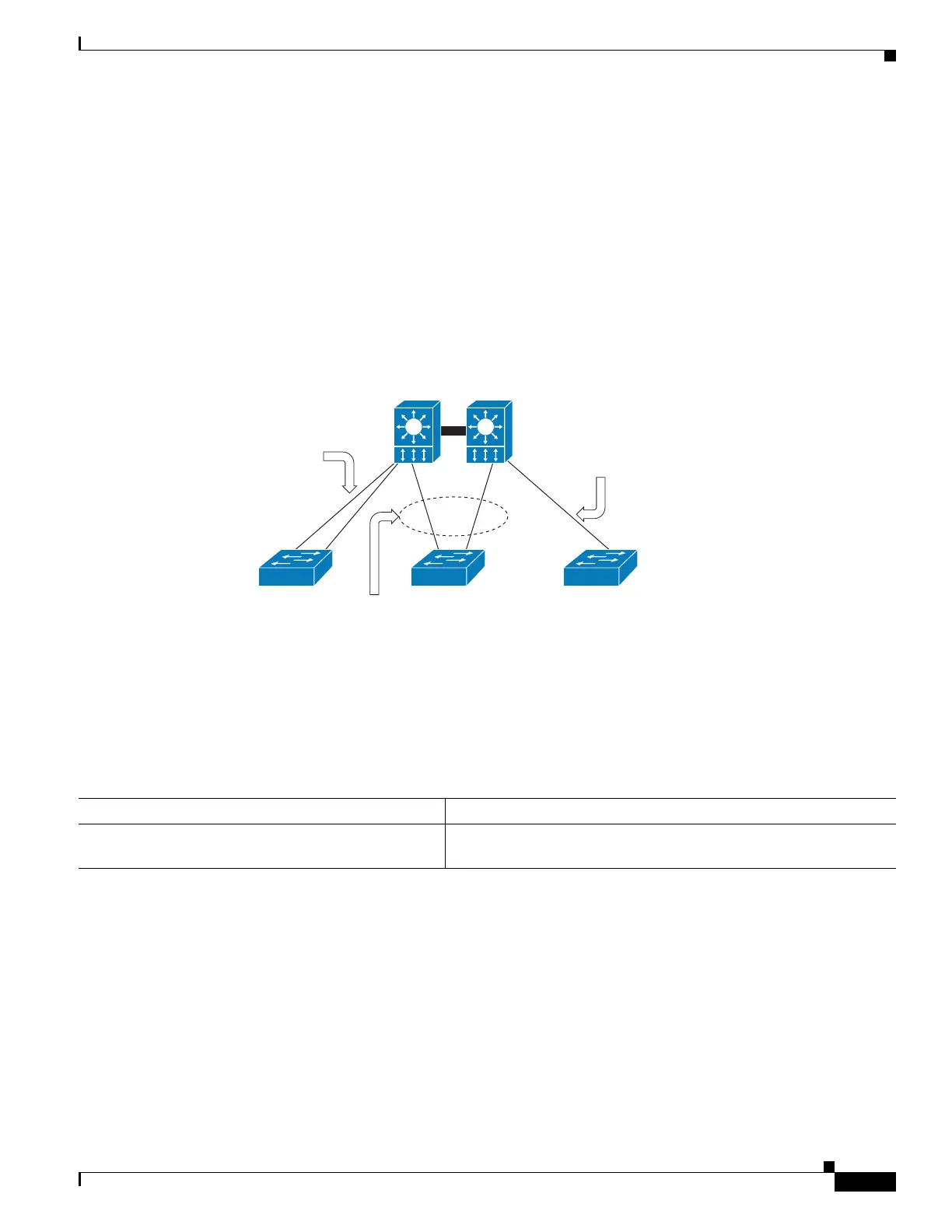5-57
Software Configuration Guide—Release IOS XE 3.6.0E and IOS 15.2(2)SG
OL-30933-01
Chapter 5 Configuring Virtual Switching Systems
In-Service Software Upgrade (ISSU) on a VSS
Traffic and Network Protocol Disruption During ISSU in a VSS
Figure 5-9indicates that both switches in a VSS reboot at some point during the upgrade process.
When a switch reboots, all the network links that terminate on that switch undergo a link-down event.
This means that network devices that are connected to the switch that is rebooting will observe a
disruption in service, unless the connection is over an MEC that contains at least one link that terminates
on the other switch. If a peer device is connected to the VSS over an MEC that has links terminating in
both switches, that device will not experience a disruption of service during the software upgrade
process. This is illustrated in Figure 5-10.
Figure 5-10 Connecting a Peer Device to VSS to Avoid Service Disruption
Related Documents
Prerequisites to Performing ISSU
Before performing ISSU, you must meet these prerequisites:
• Ensure that the current Cisco IOS XE version running in the system supports ISSU. Also ensure that
the target version supports ISSU.
You can enter various commands on the switch to determine supervisor engine versioning and Cisco
IOS XE software compatibility. Alternatively, you can use the ISSU application on Cisco Feature
Navigator to determine this.
344757
VSS
Switch #1
VSS
Switch #2
Traffic on this link will be
disrupted whenever
Switch #2 undergoes a
reboot during the ISSU
process.
Traffic on this non-MEC
Etherchannel will be
disrupted whenever
Switch #1 undergoes
a reboot during the
ISSU process.
Traffic on this MEC link will not
be disrupted throughout the ISSU process.
Whenever one of the VSS switches undergoes
a reboot, the MEC mem
ber link goes down,
causing the link peer to send all traffic over
the surviving link.
MEC
Related Topic Document Title
Performing ISSU Cisco IOS Software: Guide to Performing In Service Software
Upgrades

